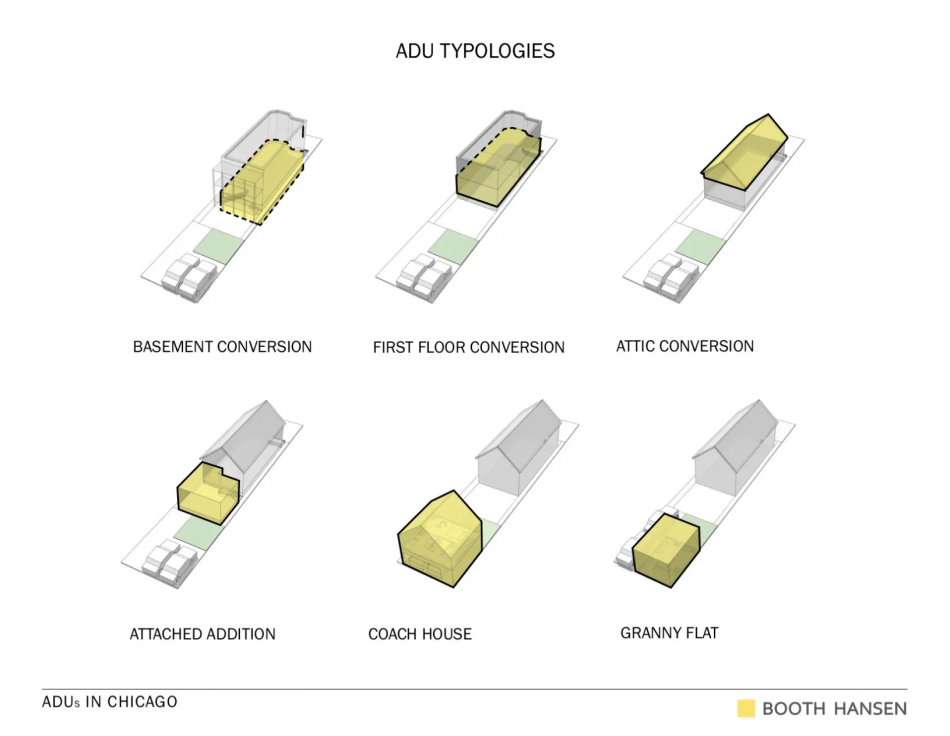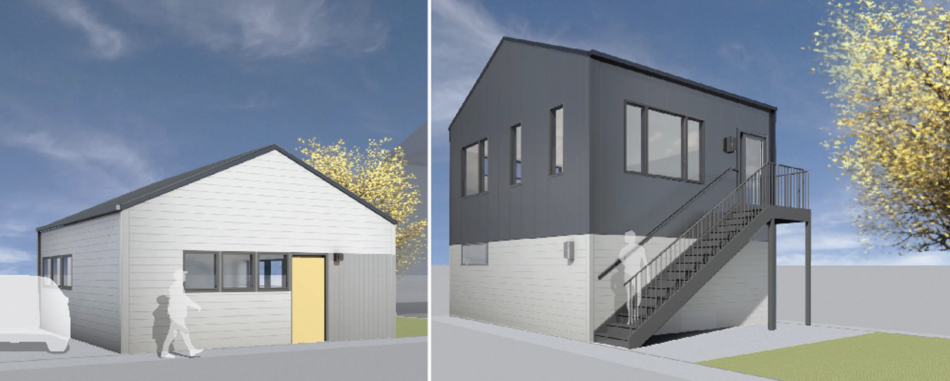After a 63-year ban, Accessory Dwelling Units (ADUs) are officially re-legalized in Chicago—at least in certain parts of the city.
Also called "Additional Dwelling Units," ADUs are secondary, smaller residences located on the same property as a traditional single-family home or multi-unit building. ADUs can be located within a property's primary structure (typically in attics or basements) or in a stand-alone accessory building such as a backyard cottage or a coach house over a garage.
Chicago outlawed new ADUs in 1957 due to overcrowding concerns and a change to the city zoning code that adopted strict parking requirements Existing coach houses were grandfathered in, but many have been demolished in the years since.
On Monday the City of Chicago opened an online portal where residents can apply to build extra housing units. City officials and housing advocates see the return of ADUs as a means to bring additional "gentle" density to Chicago's neighborhoods and increase the supply of naturally occurring moderate-rate housing.
If embraced on a mass scale, it could be a powerful tool in helping Chicago address its estimated citywide shortage of 120,000 affordable units.
"The ADU ordinance allows for the creation of new units for homeowners needing extra income, or those who wish to create separate spaces for multi-generational families," says the City of Chicago's ADU website. "It also provides a path for the legalization of units that were previously built without zoning approval and building permits."
 A diagram showing the different typologies of ADUs.Courtesy Booth Hansen
A diagram showing the different typologies of ADUs.Courtesy Booth Hansen
Approved by the City Council in December, Chicago's ADU ordinance only legalizes ADUs within five specific areas of the city under a three-year pilot program. The legislation was passed as a compromise after a push to legalize ADUs citywide failed to win over aldermen who opposed the addition of new density in favor of preserving a "suburban feel" and easy access to on-street parking within their respective neighborhoods.
The five ADU pilot zones include the following areas of the city:
- North Zone: Covering portions of the Edgewater, Lake View, Lincoln Square, North Center, Uptown, and West Ridge community areas
- Northwest Zone: Covering portions of the Albany Park, Avondale, East Garfield Park, Hermosa, Irving Park, Logan Square, Near West Side, and West Town community areas
- West Zone: Covering portions of the East Garfield Park, North Lawndale, South Lawndale, and West Garfield Park community areas
- South Zone: Covering portions of the Ashburn, Auburn Gresham, Chatham, Chicago Lawn, Englewood, Greater Grand Crossing, Roseland, Washington Heights, Washington Park, West Englewood, West Lawn, and Woodlawn community areas
- Southeast Zone: Covering portions of the East Side, Hegewisch, South Chicago, and South Deering community areas
In addition to geographic restrictions, ADUs are also subject to other rules and regulations outlined by the city. For instance, buildings must be at least 20 years old to add a conversion unit in an attic or basement space. Buildings with five or more units can not add a stand-alone accessory building like a coach house but can build up to 33 percent more residences on-site as conversion units.
Properties seeking to create multiple ADUs must set aside half of the new units as affordable housing at 60 percent of the Area Median Income (AMI). Owners have the option to partner with the Chicago Low Income Housing Trust Fund to receive subsidies for tenants earning 30 percent AMI or less.
New units are subject to the city's building codes and safety regulations and plans must be prepared by a state-licensed architect or structural engineer. Property owners are prohibited from listing ADUs on Airbnb or other short-term rental platforms.
When it comes to ADU legalization Chicago is a bit behind the times when compared to its West Coast counterparts in states such as California, Oregon, and Washington. In Los Angeles, which faces an affordable housing crunch of its own, legalized ADUs in 2017. Accessory units now account for 22 percent of LA's newly permitted housing units.
 Renderings of prototype ADUs created by Focus Development and bKL ArchitectureFocus Development/bKL Architecture
Renderings of prototype ADUs created by Focus Development and bKL ArchitectureFocus Development/bKL Architecture






